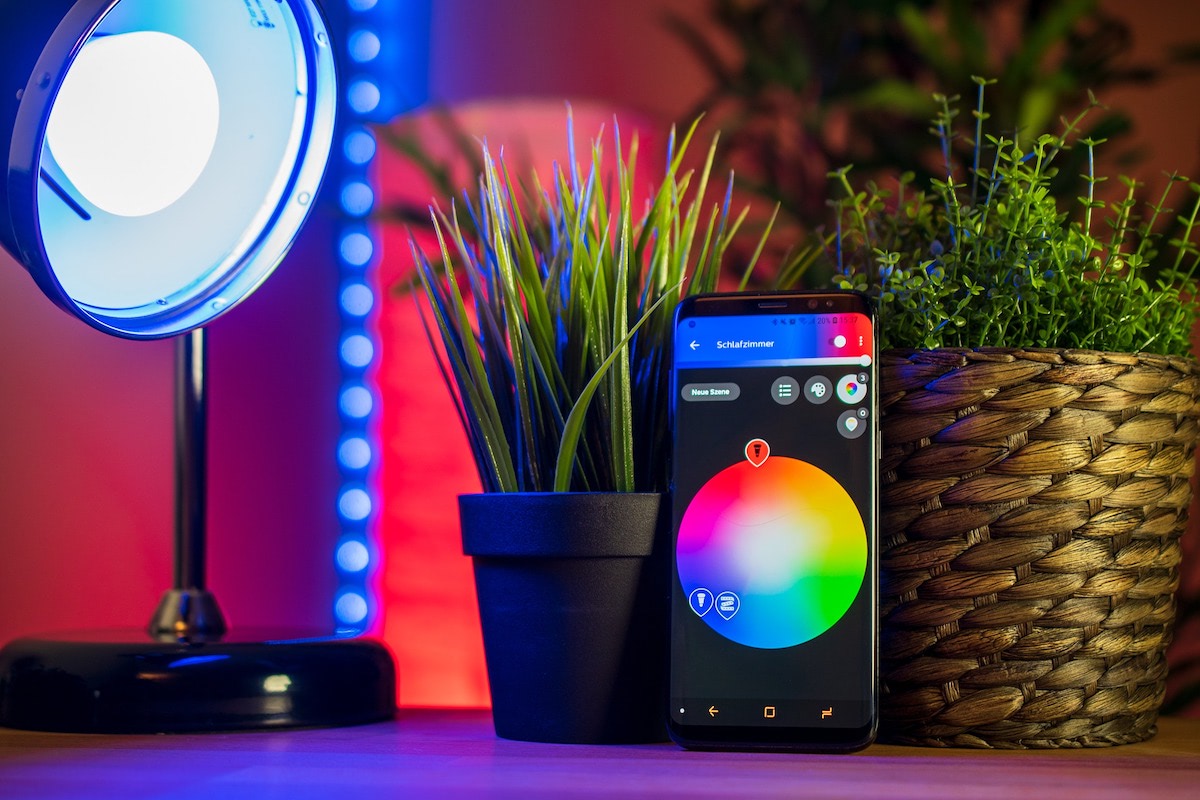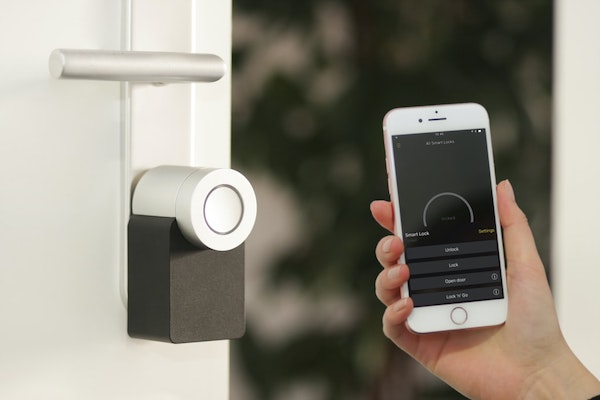Seamless Connectivity Solutions in Integrating Apple Technology in Smart Home Environments
Integrating Apple technology into smart home environments signifies a substantial advancement in home automation, leveraging the convenience and efficiency that technology can offer. Smart homes equipped with Apple’s ecosystem facilitate a coordinated and systemized network of devices. These include various intelligent applications from lighting to security, all operable with simple commands or even autonomously. The backbone of this integration is Apple’s HomeKit framework, which provides a secure and consistent platform for connecting and managing compatible devices via Apple’s devices, such as the iPhone, iPad, HomePod, and Apple Watch.
With the rise of connected home devices, Apple’s approach focuses on delivering an integrated experience. HomeKit allows users to control their home automation devices through the Apple Home app or Siri voice commands. This capability extends to adjusting thermostats, locking doors, or setting up routines that automate multiple actions with a single command. Enhanced by the seamless nature of Apple’s ecosystem, users enjoy a highly intuitive and user-friendly interface that has been refined over the years since HomeKit was first introduced.
Apple Ecosystem and Smart Home Integration
Incorporating Apple technology such as HomeKit into smart home environments empowers users to manage various devices efficiently through the Apple ecosystem. This integration combines the convenience of voice commands and seamless operation across iOS devices to enhance the smart home experience.
Apple HomeKit Capabilities
Apple HomeKit is a robust framework allowing control over smart home accessories from multiple vendors. Users can manage their smart devices through the Home app with support across devices such as iPhones, iPads, and Macs. The HomeKit ensures that each of these gadgets works together securely and is user-friendly, providing a unified smart home system. Individual device configurations, scenes, and automation can be easily set up within the HomeKit environment, providing a comprehensive solution for smart home management.
Role of Siri and Voice Commands
Voice control is a cornerstone of Apple’s smart home integration, with Siri as a personal assistant for managing tasks. Whether adjusting the thermostat or turning off the lights, Siri voice commands streamline interaction with HomeKit-enabled accessories. Siri’s integration extends across Apple devices, including the iPhone, iPad, and Apple Watch, offering accessible control from virtually anywhere within one’s home environment.
But being unable to connect to AirPlay even once can disrupt the harmony between your Apple devices and smart home technology. Addressing these issues ensures that the convenience of voice commands and the efficiency of home automation are maintained. If you’re encountering connectivity problems, Apple provides comprehensive support and troubleshooting guides. These resources are designed to help users quickly resolve common issues, reinstating the seamless operation of their smart home systems.
Interconnectivity with iOS Devices
The interconnectivity of HomeKit accessories with iOS devices like iPhones and iPads extends the functionality and convenience of the smart home. Through their iOS device, a user can remotely access and manage their HomeKit-equipped home, even when away from their property. The Apple Watch also plays a significant role in this ecosystem, allowing users to receive notifications and issue commands to their smart home setup. The synchronicity across Apple’s platforms, including Macs, delivers a cohesive and interconnected smart home experience.
Smart Home Devices and Automation
Integrating Apple technology into a smart home setup streamlines the process of controlling various devices and automates routine tasks. Specific smart devices like lighting systems, locks, and thermostats can be managed efficiently using Apple’s HomeKit framework.
Setting Up Smart Lighting Systems
Intelligent lighting systems are foundational in smart home environments, allowing users to adjust brightness, color temperature, and scheduling from their devices. Users can set up scenes and automate lighting based on time of day or occupancy, all controlled via the Home app or through voice commands with Siri. Integration with HomePod Mini allows the control of lights to be as simple as speaking into the room.
Smart Locks and Security Solutions
Security is a critical aspect of any smart home. Smart locks grant or restrict access remotely and send notifications when someone enters the house. HomeKit-compatible cameras and alarms enhance security by providing real-time monitoring and alerts. These devices work cohesively to ensure users can monitor and manage home security from anywhere, directly through their Apple devices.
Temperature and Energy Management
Efficient energy management in smart homes is possible through the use of smart thermostats and smart plugs. These devices allow for the remote adjustment of temperatures and the control of appliances, thereby optimizing energy consumption. Smart thermostats can learn a user’s schedule and adjust the climate accordingly, while smart plugs can turn off devices that aren’t in use. HomeKit enables the automation of these devices, offering a cohesive and user-friendly approach to managing a home’s climate and energy usage.
User Experience and Accessibility
Integrating Apple technology into a smart home environment dramatically enhances the user experience and accessibility for homeowners by allowing control over home automation and customization of settings for different zones within the home.
Customizing Home Automation
Homeowners can tailor the behavior of various smart home devices to their personal needs and preferences. With Apple technology, they can define automation for different rooms and adjust settings such as lighting, temperature, and security systems. This level of customization provides an experience that responds to the homeowner’s lifestyle, improving convenience and energy efficiency.
Enhancing Convenience and Accessibility for Homeowners
Integrating Apple technology into smart homes pays special attention to accessibility, ensuring homeowners with diverse abilities can interact with their surroundings effortlessly. Voice commands through Apple’s virtual assistant or simple touches on an Apple device can control various aspects of the home. For individuals with mobility or health care concerns, these features can significantly reduce the physical strain of managing their environment and contribute to an independent lifestyle.
Network and Data Security in Apple Smart Homes
Integrating Apple technology into smart home environments brings with it a strong emphasis on network and data security. Homeowners seek robust protection for their privacy and data while maintaining a seamless and secure home network connection.
Privacy Concerns and Data Protection
Apple’s smart home ecosystem prioritizes user privacy and data protection. The company has a strict policy concerning the collection and use of personal data, ensuring that only necessary data is collected, and even then, it is often processed locally on the devices to reduce the risk of exposure. Apple devices use various encryption methods, such as end-to-end encryption, to protect user data, whether stored on the device or transmitted to other devices or services.
One critical aspect of data protection is the frequent release of software updates, which Apple implements to address security vulnerabilities and enhance existing security features. These updates safeguard users’ privacy and personal information from unauthorized access or leaks.
Secure Home Network Solutions
The security of a home network is essential for maintaining the integrity of smart home systems. Apple’s approach includes offering advanced security systems within its networking products. For example, Apple’s Wi-Fi routers provide extensive coverage with updated security protocols, which help to protect the home network from unauthorized access and potential intrusions.
Moreover, Apple’s smart home technology often requires two-factor authentication for an added layer of security, especially when accessing the smart home remotely. This minimizes the chances of hacking or other security breaches. By regularly assessing the security of their Wi-Fi networks and related smart devices, homeowners can ensure that their Apple-powered smart home is convenient and secure.
Trends and Future of Apple in Smart Home Technology
Incorporating Apple’s technologies into smart homes is reshaping the domestic landscape with notable IoT and energy efficiency advancements. These developments enhance user convenience and contribute to broader objectives such as intelligent city integration and environmental sustainability.
Impact of IoT and Apple on Smart Cities
The Internet of Things (IoT) is a critical component in developing smart cities, with Apple playing a pivotal role by expanding its ecosystem. Devices like HomePod Mini and HomeKit, Apple’s smart home platform, lay the groundwork for sophisticated smart home setups. These IoT devices contribute to the fabric of smart cities by enabling more efficient resource management and providing seamless experiences for residents. Apple’s technology brings forward elements of ambient intelligence, allowing devices to work together intelligently and enhance urban living.
Energy Efficiency and Environmental Impact
Apple’s stance on energy efficiency extends to its smart home products, which focus on minimizing energy consumption without sacrificing functionality. Advanced sensors and algorithms ensure that Apple’s devices can adapt to a user’s lifestyle, optimizing energy use and reducing the overall environmental footprint. Integrating Apple’s ecosystem into the smart home also contributes to the concept of ambient assisted living, facilitating a greener, more energy-efficient household that aligns with broader environmental goals.









